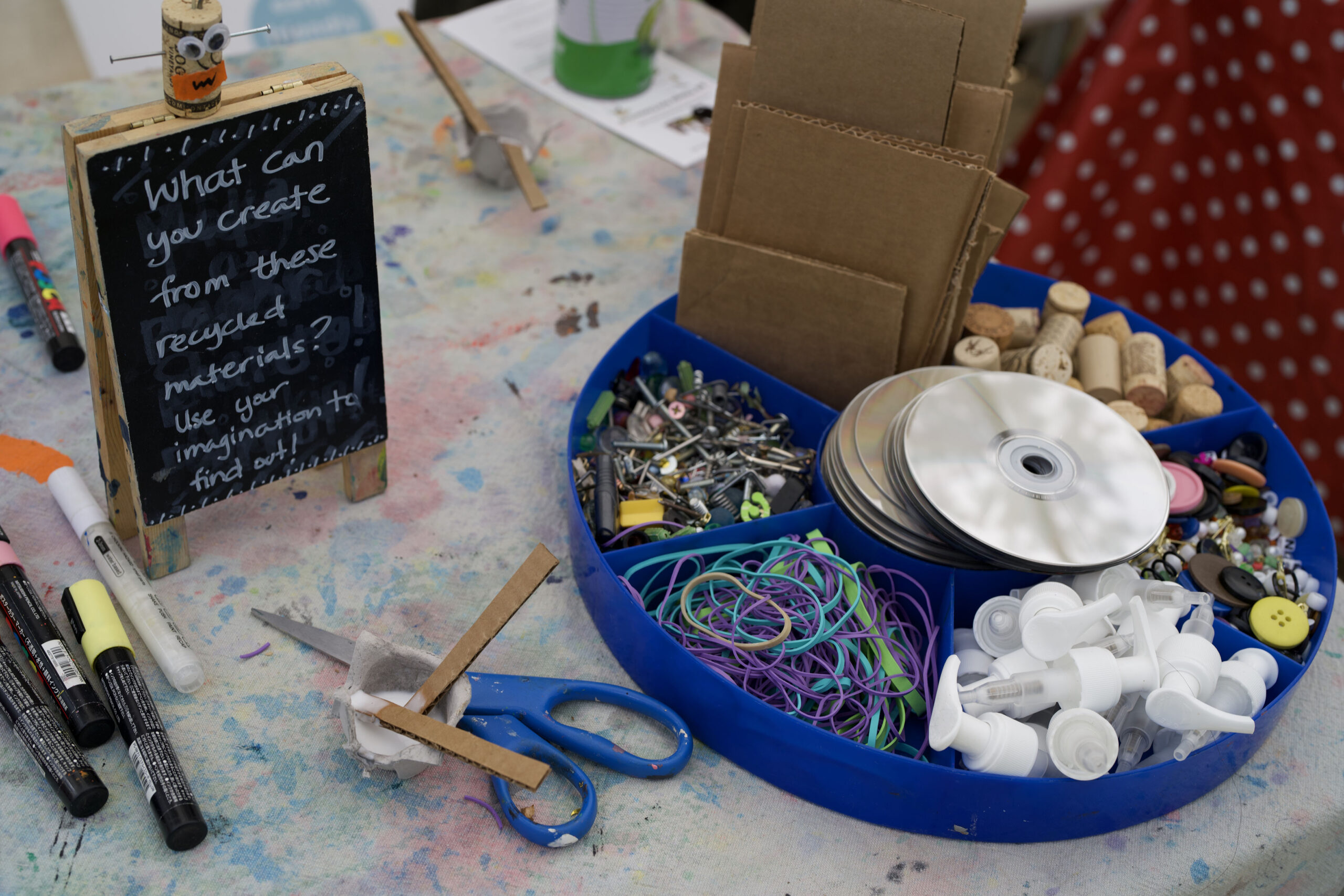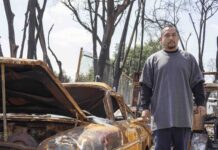Supporting the next generation that inherits Earth

The grass grows green and the trees stand tall at Nestle Elementary, as children settle in seats to explore the world they’ll one day inherit.
Angela Glucksman is a preschool teacher at Nestle Elementary in the San Fernando Valley, an adjunct Child Development professor at Pierce College and a mother. Glucksman plans activities and creates a learning environment that she hopes her preschoolers will remember throughout their academic journey.
“I’m lucky at my school that we have a lot of beautiful trees and nice grassy areas while other campuses are just concrete and chain-link fences,” Glucksman said.
Her classroom embodies the recycling unit she covers as she repurposes jars and other containers to give them new use. She takes advantage of the greenery of Nestle’s campus and uses it as a teaching tool by asking open-ended questions to get her students thinking about the limited number of resources on the planet.
“The simplest way, I think, to do it, is to talk about usage of water, and that there is only so much water and usage of trees. When we need paper and we need tables and things made out of wood, there’s only so many trees,” Glucksman said. “And if we continue to cut down the trees, what happens to the animals that live in the trees?”

Jemma Wildermurth is the owner and founder of CReATE Studio, a mobile collective that uses recycled material to create art.
Wildermurth founded CReATE Studio to teach children how to be sustainable and resourceful. By melding the joy of creating with recycling, she has created a unique experience that inspires the next generation to think artistically because the future is the product of the present.
“The children learn to see new ways of using everyday materials instead of using new materials,” Wildermurth said.
She said that eco art is an interactive way to introduce the idea of reducing waste and reusing whenever possible. Wildermurth has many art projects and resources free for the public to help foster a creative community.
CReATE Studio has also helped form a non-profit called CReATE on Your Campus that helps schools reuse material or redistribute them to other campuses for art-based curriculum. By working with schools, Wildermurth has helped students be more mindful about the Earth’s resources and raises awareness on how it affects everyone.

Pierce Child Development professor Traci Drelen explained the importance of at least introducing part of the ongoing conversation regarding the climate and environment.
“Children think concrete, so we need to tell them what they can understand and what they need to know and answer questions,” Drelen said. “Telling children how to live gently and how to be eco-friendly is going to help them understand global warming, and that is going to come up in the future when children can really understand the concept.”
According to Drelen, experiences don’t have to be cost heavy. Simply going outside and observing the environment can strengthen the bond children have with Mother Nature and have multiple benefits to a child’s well-being.
Each semester, a new batch of college students take the Introduction to Curriculum in Early Childhood Education class to prepare them to develop learning plans that culminate developmentally appropriate activities.
“When I was doing my bachelor’s and master’s work in teaching, there wasn’t any emphasis put at all on outdoor sustainability or ecology,” Drelen said. “We didn’t talk about this 10 or 15 years ago, so I think there needs to be more of an awareness for all of our members in early childhood that this is a new way.”
Drelen said children aren’t always praised for showing compassion and being respectful to living things, and that it’s important for early educators to adapt the curriculum to the children to prepare them with a strong foundation of empathy and kindness for one another.

In Glucksman’s preschool class, one way students learn to respect living things is by observing insects without disturbing them. The children have access to magnifying glasses as tools to help them investigate.
“We talk about how it’s a living creature, and if we see a bug in our classroom, we’re not going to kill it,” said Glucksman. “We’re going to either let it be or move it outside.”
According to Glucksman, not enough parents see the purpose of dedicating too much time to playing outdoors instead of learning, because they don’t get the full story of creative curriculum. She added that children need to develop as a whole instead of focusing on core subjects to get them kindergarten-ready.
She further explained that the pandemic had a hidden side effect of having more class time outside, but some believe it’s not necessary anymore.
“I think one of my biggest jobs is just helping parents understand that,” she said. “It’s not just about being safe from viruses and stuff like that. It’s about helping their children connect with nature and helping give them ideas of what they can do with their kids outside.”
Opportunities to provide learning experiences can involve the families, the community and even the city where the child lives. Glucksman said she has received positive feedback from her preschoolers’ parents as they continue the conversation about caring for the Earth.
“I’ve never had any real complaints because I think we come from it, from a place of love,” Glucksman said. “Empowering that knowledge is empowerment for them. I think that when a 3 – or a 4-year-old can change what a whole household is doing and have a positive impact, I think that is amazing.”



